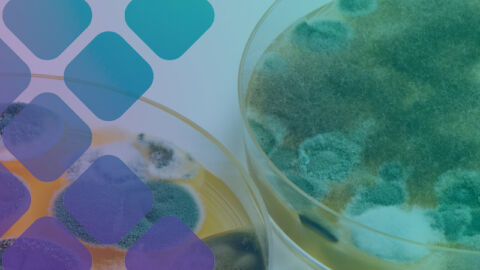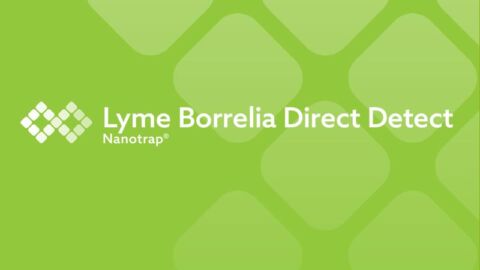Due to your present health concerns, your healthcare provider suspects mold. A MycoTOX Profile and Organic Acids Test are ordered to understand the potential of mold exposure, and how this exposure is impacting your body’s metabolic functionality. The first step to support recovery is to identify and remove the exposure.
Well, that’s easier said than done!
This is because in our active, varying lives, other buildings we frequent like work or school, and even cars may be sources of exposure. It is not always the current home! Keeping this fact in mind is crucial to a well-rounded mold inspection.
Our goal with this blog will be to summarize the current mold testing and remediation options you can consider, to help navigate these sometimes confusing, expensive, and often life-changing conversations.
For more information on mold, mycotoxins, and their impact on health, Learn more here.
Mold Testing and Remediation Overview
Currently, the mold testing and remediation industry is still young, and will undoubtedly adapt and change as the awareness of mold-related illness grows. There are no “gold standards” or even any standardization of what defines acceptable or unacceptable levels of mold, mold spores and mycotoxins.
Additionally, it must be stated that remediation for sensitive patients goes well beyond current industry practices. Sensitive patients may still be reactive in a house that has been remediated but lacked proper post-remediation cleanup. Or perhaps the remediation was conducted in a way that during the process, other areas of the house were contaminated.
So given this uncertainty, where to begin?
Below, we will describe some common mold testing options to consider prior to having a certified professional come in to evaluate your space
Mold Sabbatical & Home Testing Options
The most cost-effective option is an environmental sabbatical. This simply involves leaving the suspected exposure for 3-7 days in a clean location. Ideally where other mold-sensitive individuals have not been reactive in the past. Keep in mind that many hotels, Airbnbs, and even friends and family’s homes may be sources of mold contamination.
Choose your location wisely and assess for any symptomatic improvement. An important practice is to avoid bringing any personal items from the suspected contaminated home as these could also be sources of exposure.
Common mold sabbatical options:
- Setting up a backyard tent or camper
- Renting an Airbnb
- Taking a mini vacation
If after leaving the area of concern, there were symptomatic improvements, the second step is ruling the home in or out.
Mold Testing Methods
ERMI/HERSMI
The Enviromental Relative Moldiness Index (ERMI) was developed by the EPA’s Office of Research and Development (ORD) as a research tool to investigate mold contamination in homes. The testing used is a mold-specific quantitative polymerase chain reaction (MSQPCR) method that quantifies 36 molds and calculates a score of relative moldiness as compared to the reference homes. The score can range from negative ten (-10) to positive twenty (20). The test is conducted using a vacuum to collect dust before sending the sample for analysis. For homes sans carpet, a Swiffer method is used.
The HERTSMI is a less expensive option, utilizing the same collection and testing methods, but for only 5 of the more common indoor mold species.
Pros
- Often described as a “snapshot in history” of water damage in a home.
- PCR method is very precise, and can detect small mold fragments, often missed with other testing methods (e.g. Stachybotrys)
- ERMI is frequently referred to as the preferred test for treating mold illness and is utilized frequently by mold-literate clinicians
Cons
- The test is not suited for detecting the source of where the mold is coming from, as the dust sampled throughout the house is combined during collection
- ERMI may miss extensive damage if only one area of the house is contaminated, due to the wide distribution of spores
- Just because an ERMI test comes back with a low score, this doesn’t necessarily mean the house is clean. You and your practitioner should always evaluate the spore count in addition to the score.
Spore traps/Air Sample
Spore traps are the current industry standard for mold testing, utilizing a pre-calibrated air-flow rate device that samples the air over a pre-determined amount of time, typically 1-5 minutes. The indoor sample is then compared to air quality samples taken from non-compliant locations or outside.
Pros
- Primarily used by professional inspectors, and thought to be more standardized than other methods
- Often necessary for identifying sources of mold growth
- Able to detect more species than ERMI/HERTSMI
Cons
- Results can be impacted by improper testing methods
- Only utilized by professionals
- May miss unseen mold growth if the concentration of spores in the air is low during the collection time.
- Will only test for viable organisms (i.e. intact mold spores, bacteria, yeast)
Testing visible mold growth can be done by removing portions of contaminated building, or sampling surfaces with a sterile swab or tape.
Bulk material and surface tests
Pros
- Testing damaged materials can detect far more species than ERMI
- Able to identify molds that may not be present in the air
- Little to no equipment is needed
- Useful for assessing sources of mold that will need to be removed, repaired, or cleaned
Cons
- Bulk material testing is usually biased toward viable organisms
- Risk of releasing mold spores into the air when removing contaminated material
- Does not assess airborne exposure
Gravity plates
Plates can sample dust and mold spores suspended in the air after being placed in a suspected area for a predetermined amount of time. Plates showing mold growth can be sent for laboratory analysis.
Pros
- Cost-effective entry point to creating a testing and remediation plan
- Diverse uses for testing (e.g. able to test the home, car, furniture, carpeting etc.)
- Good option to assess long-term remediation success
Cons
- Prone to false negatives due to poor air circulation
- May miss heavier mold species that are often not airborne (e.g. Stachybotrys)
- Less precise than spore traps in identifying the source
- Only able to detect viable organisms
Mold dogs
Dogs have been used for many years as a way for military and law enforcement to detect narcotics, bombs, money as well as other substances. In real estate applications, dogs have been used to detect termites, natural gas leaks, and the area of mold detection has been growing in the US since the early 2000’s. However, currently the EPA and other organizations like NORMI do not advocate using mold dogs.
Pros
- Ability to detect hidden sources of mold, even with exceptionally low amounts
- Results can be obtained immediately, with no lab turnaround time
- Finding the hidden sources of mold quickly can save time and money during remediation
- Lower cost post-remediation audits compared to other methods
Cons
- Even when mold is identified by a well-trained dog, further follow-up testing may be necessary
- Dogs are commonly trained for 20 common species of mold, limiting the scope of what can be found
- Training needs to be a constant process, and there are currently no accepted certifications for training mold dogs unlike other agencies using canines for detection (e.g. National Narcotic Detector Dog Association, U.S. Customs Bureau, the Bureau of Alcohol, Tobacco, and Firearms)
DIY Testing – Best practices
- Collect as many samples as your budget allows.
- Collect samples from areas that you know, or suspect had water damage
- Collect samples from areas that you spend the most time in.
- Swab all potential visible mold.
- Note areas with strange smells or that feel weird.

DEFINITIONS
Viable – Agent is alive and can grow in suitable conditions.
Non-viable – Agent is not alive, and as such, will not grow despite favorable conditions.
Working with an Expert
Mold remediation is an expensive process, and deciding whether to work with a professional or DIY should be taken on a case-by-case basis. While there is no correct answer, there are considerations anyone beginning this process should be aware of. Also, be aware that in many cases homeowners do not remediate effectively and can make themselves sicker in the process. Consulting a professional should always be the first before ever considering a DIY option.
Mold inspectors – Vet who you work with
Mold inspectors are often either microbiologists or someone with experience in the industry. While there are certifications currently available, the reality is all mold inspectors are not created equal.
Types of inspectors commonly found:
Visual inspectors – Professionals who assess for signs of water damage and mold growth. This approach is not ideal and will miss unseen mold issues.
Air inspectors – Air testing is the most widely used approach for testing mold, and despite its limitations, is one of the best ways to identify sources of mold growth.
Home health consultants – The third category is professionals who will utilize several tests to fully evaluate the home. They are well-versed in helping individuals suffering from mold-related illness and go beyond current industry standards.
A good place to get started with your search check out the National Association of Mold Remediators and Inspectors (NAMRI) or the National Organization of Remediators and Microbial Inspectors (NORMI).
Helpful resources
Home Health Consultants and Mold Professionals
- https://marycordaro.com/about/marys_bio_cv.html
- https://pjharlowwellness.com/
- https://www.normipro.com/
- https://yesweinspect.com/
- https://www.themichaelrubino.com/
- https://createyourhealthyhome.com/
- https://findingthemold.com/
- https://iseai.org/
Air Filters
Air filters will not address mold growth, however, will improve air quality by reducing the concentration of mold spores.





